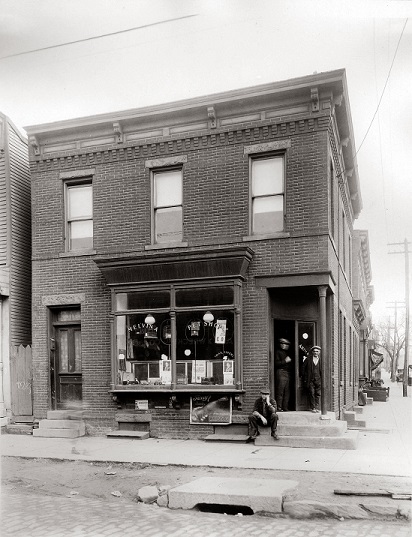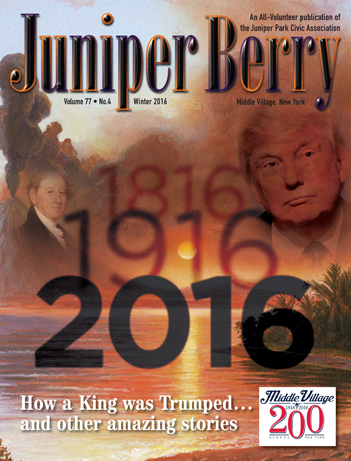Vincent Seyfried’s entry in the Encyclopedia of New York City describes the history of Melvina as follows:
It was originally the farm of the Van Cott family and became one of the first real-estate developments in Maspeth. On a map published in October 1852 by a real estate agent from New York City, John H. Smith, the area was shown as being bounded to the north by Maspeth Avenue and to the south by Flushing Avenue, and extending 257.5 feet (78.5 meters) on either side of 59th Street. There are twenty-five houses on Beers map of 1873. Melvina was later absorbed by Maspeth.
The Beers map mentioned above is the only map that spells the name of Melvina correctly (although it frustratingly misspells Maspeth Avenue as “Masbeth”). The 1891 Wolverton map refers to the village as “Malvina” but clearly shows what were considered to be the boundaries of the area. As you look at the maps, note that the site of St. Saviour’s Church, previously known as “Maspeth Hill” was located within the village of Melvina. The Van Cott family, along with neighbor James Maurice, donated the land that St. Saviour’s was built on and co-founded the church. The 1902 Sanborn Map represents the area as mostly residential and sparsely populated (and also unfortunately misspells it as “Malvina”). As for the choice of the name “Melvina”, it likely was named after the developer’s wife or daughter, which was a common practice during the 19th century.
The Melvina Pet Shop was located in this section of town, at the southeastern corner of 55th Street and Flushing Avenue. This photo was taken in November 1929. The proprietor of this establishment was named Charles Koferl, whose name appears on the window glass. In the window display are several bird cages and pet supplies such as dog collars. A sign advertises a barn dance at the Williamsburg Benevolent Society on Saturday, November 16th. And then of course, as this was election season, there is at least one political poster – for Democrat Edward W. Cox, candidate for the Board of Aldermen, a body which was replaced a decade later by the City Council. Below the window are ads for Niagara Dry Ginger Ale, Manhattan Special Beverage and Whistle soda. Three interesting male characters are present in the doorway and on the steps. Above the seated man is Halloween chalk graffiti that says “I love you.” Faint reflections in the window reveal that across the street stood a sign for an auto wrecking company as well as an ad for Lipton’s Tea. A number of buildings in the Melvina area, including this one, were condemned and demolished when the Flushing Avenue underpass was constructed in the late 1960s.
The only trace of Melvina left today is a short road called Melvina Place which runs north of Maspeth Avenue. In olden times, a street name would often refer to where the road would take you rather than where it was. Therefore, Maspeth and Flushing Avenues start in Brooklyn and lead you toward your destination. Melvina Place may have been part of a longer road at one point, originating in another town.
Most of the former Melvina is today a relatively quiet mixed-use residential and light manufacturing area in the western area of Maspeth.




